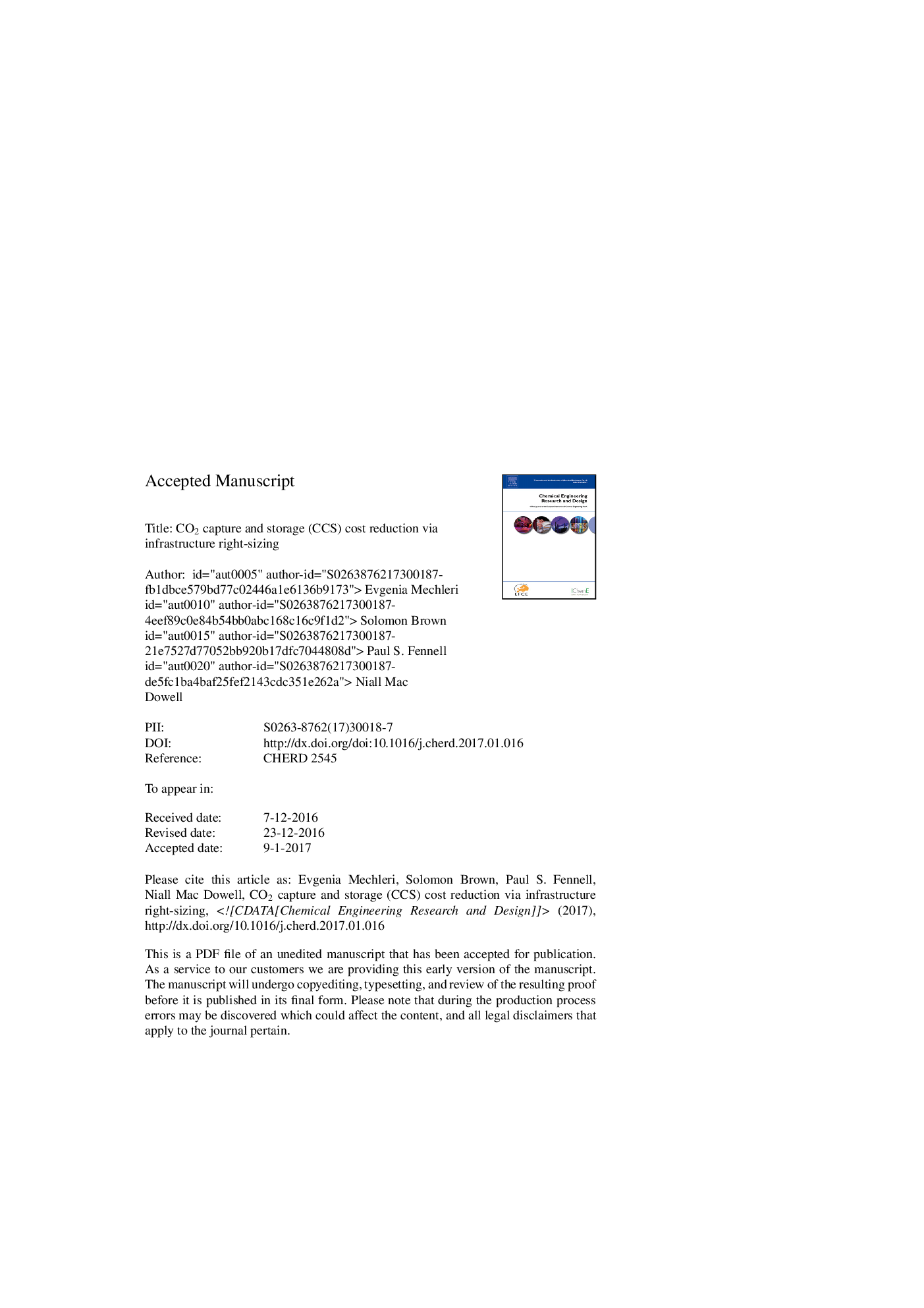| Article ID | Journal | Published Year | Pages | File Type |
|---|---|---|---|---|
| 4987317 | Chemical Engineering Research and Design | 2017 | 31 Pages |
Abstract
Carbon capture and storage (CCS) will be a critical component of a portfolio of low-carbon energy technologies required to combat climate change (IEA-GHG, 2013). As such, an extensive transportation infrastructure will be required to transport captured CO2 from different sources to the available sinks. Several studies in the literature suggest that shared oversized pipeline networks may be the most efficient long term option compared to single source to sink pipelines, based on increased CCS deployment over the years and therefore increased CO2 flowrate to the transport network. However, what is neglected in this vision is that the deployment of intermittent renewable energy tends to displace thermal power generation. This directly reduces the amount of fossil fuel burned, CO2 produced, captured and transported through the network. This paper presents an optimisation methodology to “right-size” CO2 transport infrastructure, explicitly accounting for the transient flow of CO2 arising from the co-deployment of intermittent renewable energy generators. By application of this methodology, we demonstrate that capital cost reductions of up to 28% are possible relative to a business-as-usual design case.
Keywords
Related Topics
Physical Sciences and Engineering
Chemical Engineering
Filtration and Separation
Authors
Evgenia Mechleri, Solomon Brown, Paul S. Fennell, Niall Mac Dowell,
